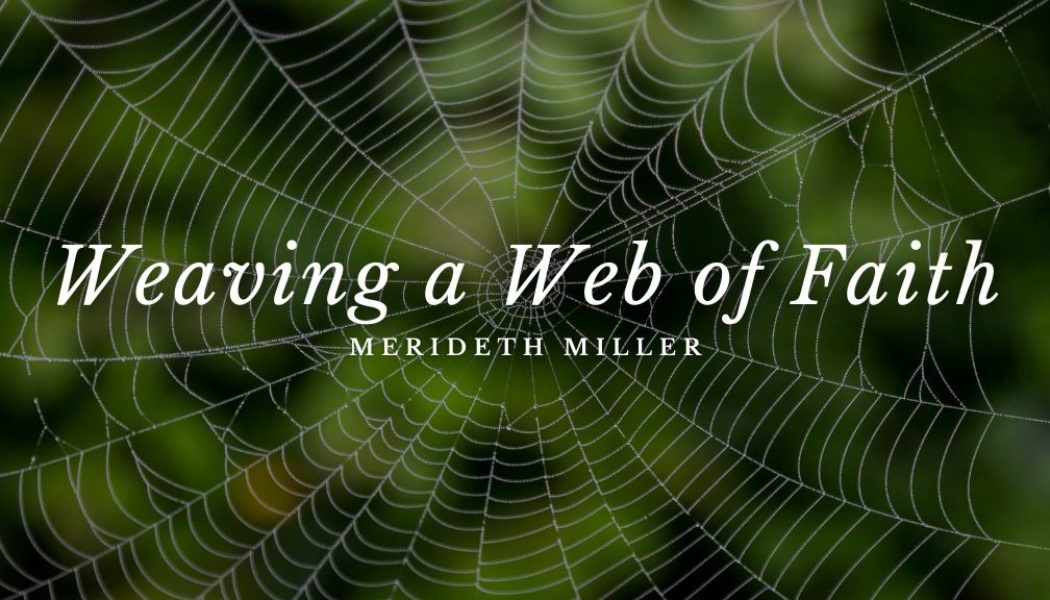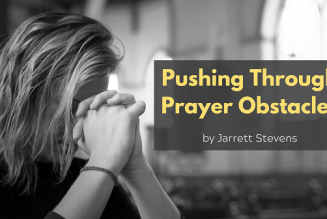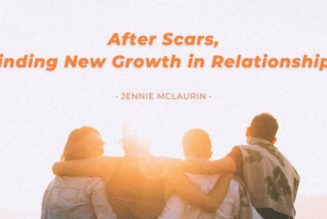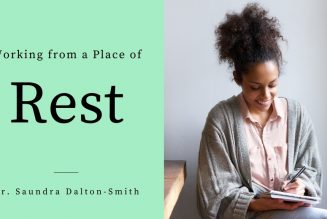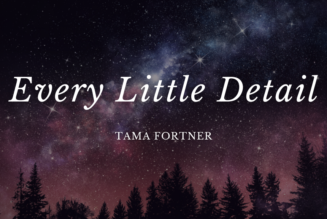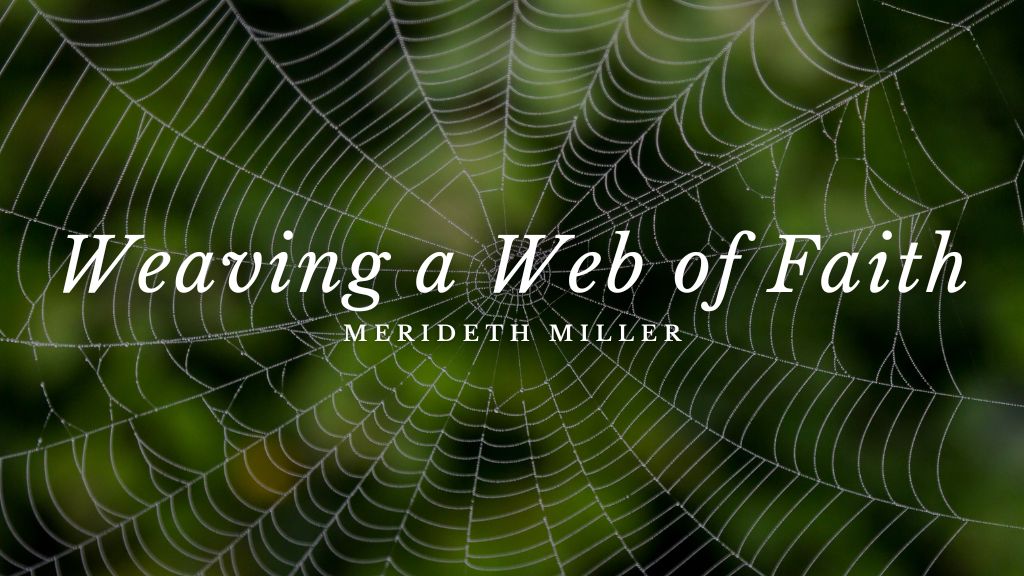
“Through reading Your Word, I’ve seen that waiting, trusting, and hoping are intricately connected— like golden strands woven together to form a strong chain. I think of trusting as the central strand because this attitude is taught so frequently throughout the Bible. Waiting and hoping embellish the central strand and strengthen the chain that connects me to You.”
– Jesus Listens, April 15th
When my younger son was four, his preschool teacher spent the month of October on a spider unit. They went on walks looking for webs, made spider art, and generally delighted in all things spider. I do not delight in anything spider.
One October afternoon, he began to climb into his backseat chair while offering an unending flow of words about webs: “There are different kinds of spider’s webs, not just one, Mommy.” “Oh really?” “Yes, there’s funnel webs and tangle webs and sheet webs and orb webs. And…” he ticked each one off his stubby fingers. As I learned that day, webs can take an astounding variety of shapes, while still sharing some common features: anchor strands that hold the web in place, internal strands that give it shape and texture and beautiful complexity.
I trust you have—at some point in your life—looked closely at a spider’s web. It’s fascinatingly intricate, seemingly so fragile. And yet, it’s a spider’s home, its source of nourishment, its protection. A web is a spider’s way of adapting to the endlessly complex, maddeningly unpredictable, frighteningly unstable world in which it lives. And that’s what makes it such a helpful image for our faith.
Before going further into why this image can be so rich, let’s explore an alternative metaphor born especially from the era of Modern Philosophy. (Dates for this sort of thing get fuzzy, so let’s say roughly from the 1600’s to the 1900’s). In that time, the dominant image for how a person comes to know things was a wall. A person lays a sturdy foundation of knowledge and facts, and then can build on top of that layer with another layer of knowledge, and then another. Each layer follows from and rests upon the layer before. (This is, notably, not quite the same way the Bible talks about Jesus as our firm foundation—that’s about attaching our trust to a person. And as you’ll see in a second, a web is a great companion to that idea in a way that the modern ‘knowledge wall’ is not.)
If my faith is a wall, then I begin by selecting foundation stones, traits of God’s upon which I build my beliefs. And then I build another layer of beliefs on top of the foundational beliefs, and then another layer on top of that one. But then, because our God is complex and we are always
getting to know God more, one of those beliefs may get exposed as not being true, or I may come to learn something new about the Bible or theology. What now?
If my faith is a wall, there are two options: I can explain away the new information that doesn’t fit in the wall I’ve built, or I can take out a stone. And what happens to a wall when a stone gets removed? The whole thing topples over.
Let’s go back to our spider’s web again. For a web, the source of strength are anchor threads, attached to something solid (like that corner of my living room I can’t reach). Each thread is upheld by tension and expects to be stretched. Meanwhile, its shape, texture, complexity, and beauty come from the internal threads. Anchor threads and internal threads combine to create something incredibly resilient.
Perhaps our faith works in a similar fashion. Anchor threads affix to who God is, including the attributes that live in mysterious, dynamic tension with one another. Internal threads are like habits: less essential, but still important. Beliefs, faith practices, and life rhythms give our faith its unique shape.
As we discover more of who God is, adjust our faith practices to continually create space for God in the midst of each season of life, learn new things from and about the Bible, we let our web be stretched. Just as, according to our friends at MIT, “a spider web gets its strength from silk strands working together and their ability to stretch when stressed,” so it is with our faith.
And then there’s what happens when things break. Because new questions, information, experiences, both positive and painful, will cause strands to break. It’s inevitable. They weren’t working anymore. But the spider doesn’t tear down the whole web and start a new one. They string new threads where the old used to be, fresh and strong, and yet elastic.
If you’ve ever felt stuck with the questions and complexities of faith, or burdened by what to do as your faith changed, or unsure how to move forward after pain, it may be in part because you are thinking about structures. Perhaps shifting your image to strands could help. Breakage isn’t failure; our faith is not wrecked. We are anchored to who God is, and we can reweave.
The next time you spy a spider’s web, consider what attributes of God’s are holding you strong. Your anchor threads? What new things about life with God might be received as needed tension? What habits or practices are giving your faith its unique, beautiful shape?
About the Author
 Meredith Miller is the author of Woven: Nurturing a Faith Your Kid Doesn’t Have to Heal From, as well as a pastor and a parent who has spent most of the past twenty years helping families follow Jesus. She has been involved with Fuller Youth Institute since 2007, and from 2014-2019 she was Curriculum Director for the children’s ministry at Willow Creek Community Church in Chicago, IL. Meredith holds a Master of Divinity degree from Fuller Theological Seminary, as well as a B.A. in Religious Studies and Spanish Language & Literature from Westmont College. She is pastor of Pomona Valley Church and calls Southern California home.
Meredith Miller is the author of Woven: Nurturing a Faith Your Kid Doesn’t Have to Heal From, as well as a pastor and a parent who has spent most of the past twenty years helping families follow Jesus. She has been involved with Fuller Youth Institute since 2007, and from 2014-2019 she was Curriculum Director for the children’s ministry at Willow Creek Community Church in Chicago, IL. Meredith holds a Master of Divinity degree from Fuller Theological Seminary, as well as a B.A. in Religious Studies and Spanish Language & Literature from Westmont College. She is pastor of Pomona Valley Church and calls Southern California home.
